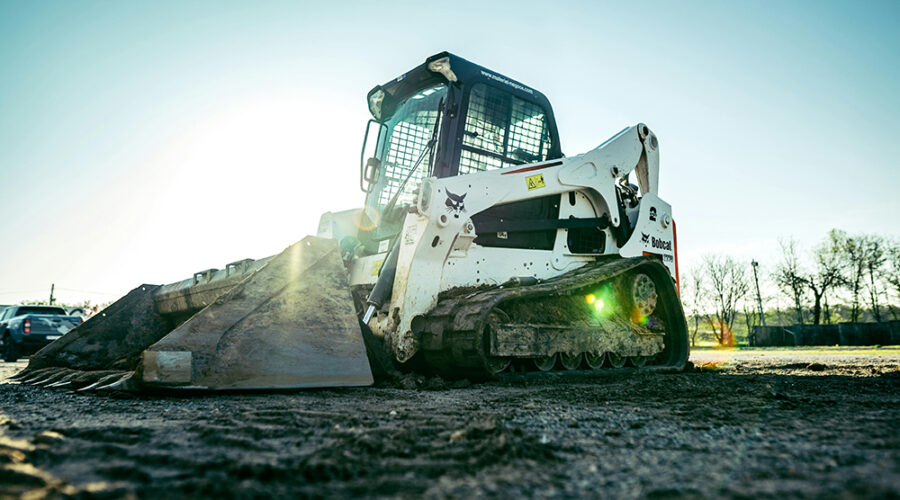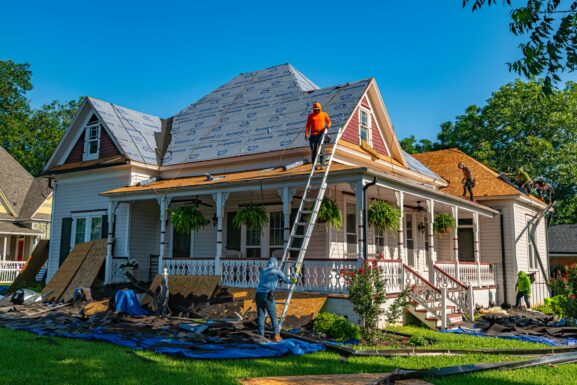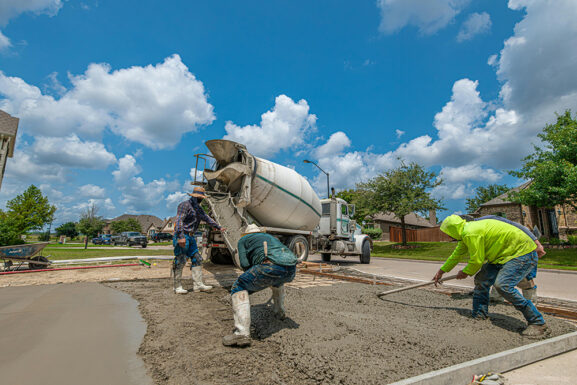Equipment Financing vs. Leasing: Making the Right Choice
That shiny new excavator in the dealer’s lot could transform your business. The price tag? $150,000. Your current bank balance? Let’s not talk about that. Sound familiar? Every contractor faces this challenge: you need quality equipment to grow, but major purchases can strain cash flow and impact your financial stability.
The solution isn’t always obvious. Should you finance the equipment with a loan, lease it, or explore other options? The choice you make could save or cost you tens of thousands of dollars over the equipment’s lifetime. More importantly, it could be the difference between manageable monthly payments and financial stress that keeps you awake at night.
Let’s break down everything you need to know about equipment financing versus leasing, so you can make the smartest decision for your contracting business.
Understanding Your Equipment Acquisition Options
Equipment Financing (Loans)
When you finance equipment, you’re taking out a loan to purchase it outright. You own the equipment from day one, make monthly payments to the lender, and keep the equipment once it’s paid off.
How it works:
- Down payment typically 10-20% of equipment cost
- Loan terms usually 3-7 years
- Interest rates currently range from 6-15% depending on credit
- Equipment serves as collateral for the loan
Equipment Leasing
Leasing is essentially renting equipment for a set period. You make monthly payments but don’t own the equipment unless you exercise a purchase option at the end.
Types of leases:
- Operating Lease: Return equipment at end of term
- Capital/Finance Lease: Option to purchase for nominal amount
- Fair Market Value Lease: Option to purchase at current market value
The Real Costs: Financing vs. Leasing Breakdown
Let’s compare both options using a real example: a $100,000 excavator.
Financing Example:
- Purchase price: $100,000
- Down payment (15%): $15,000
- Loan amount: $85,000
- Interest rate: 8%
- Term: 5 years
- Monthly payment: $1,723
- Total cost: $118,380
- You own: The excavator (worth ~$40,000 after 5 years)
Leasing Example:
- Equipment value: $100,000
- Lease term: 5 years
- Monthly payment: $1,450
- Total payments: $87,000
- Purchase option: $25,000 (fair market value)
- Total cost to own: $112,000
- No down payment: $0 upfront
Use our interactive calculator below to run your own numbers.
When Equipment Financing Makes Sense
Choose financing when:
1. You Plan Long-Term Use
If you’ll use the equipment for many years, ownership builds equity. A concrete mixer used daily for 10+ years is a perfect financing candidate.
2. Tax Benefits Matter
Owned equipment qualifies for Section 179 deductions up to $1,160,000 (2023 limit) and bonus depreciation. This can significantly reduce your tax burden in the purchase year.
3. You Want Control
As the owner, you can modify equipment, use it as collateral for other loans, or sell it when needed. Tools like QuickBooks can help you track depreciation and manage equipment assets effectively.
4. Lower Total Cost
For equipment you’ll keep long-term, financing often costs less than leasing over the equipment’s useful life.
5. Cash Flow Can Handle It
If you have steady income and can manage higher monthly payments, financing builds assets instead of just covering usage.
When Equipment Leasing Makes Sense
Choose leasing when:
1. Technology Changes Rapidly
For equipment that becomes obsolete quickly (like certain tech-heavy machinery), leasing lets you upgrade without being stuck with outdated assets.
2. Seasonal or Project-Specific Needs
If you only need equipment for specific seasons or types of projects, leasing can be more cost-effective than year-round ownership.
3. Cash Flow Preservation
Lower monthly payments preserve working capital for other business needs. This is crucial for growing businesses that need flexibility.
4. Maintenance is Included
Many leases include maintenance packages, which can be valuable for complex equipment. Software like ServiceTitan can help you track maintenance costs on owned equipment to compare total ownership costs.
5. Tax Strategy Benefits
Lease payments are typically 100% deductible as business expenses, which can be beneficial depending on your tax situation.
Hidden Costs You Need to Consider
Financing Hidden Costs:
- Maintenance and repairs (after warranty expires)
- Insurance requirements (often comprehensive coverage required)
- Storage and security when not in use
- Depreciation losses on resale
- Opportunity cost of down payment capital
Leasing Hidden Costs:
- Excess wear and tear charges at lease end
- Early termination penalties if you need to end the lease
- Mileage or usage overage fees
- Insurance gap coverage requirements
- No equity building – all payments are expenses
The Smart Contractor’s Decision Framework
Use this step-by-step process to evaluate each equipment purchase:
Step 1: Analyze Usage Patterns
- How many hours per month will you use this equipment?
- Is usage seasonal or year-round?
- Do you have multiple projects lined up requiring this equipment?
Step 2: Calculate Total Cost of Ownership
Include purchase price, interest, maintenance, insurance, and storage costs. Tools like Buildertrend can help track equipment costs across multiple projects.
Step 3: Evaluate Cash Flow Impact
- Can you handle the higher payments of financing?
- Do you need to preserve cash for other business investments?
- What’s your current debt-to-income ratio?
Step 4: Consider Tax Implications
Consult with your accountant about Section 179 deductions, bonus depreciation, and how each option affects your tax strategy. Software like TaxAct Business can help model different scenarios.
Step 5: Factor in Business Growth Plans
- Are you expanding into new service areas?
- Do you need flexibility to upgrade equipment quickly?
- Will this equipment help you win larger contracts?
Alternative Financing Options to Consider
Equipment Rent-to-Own
Combines aspects of both leasing and financing. You rent equipment with the option to purchase, often with rental payments applied to the purchase price.
Used Equipment Financing
Consider quality used equipment to reduce costs. Platforms like MachineryTrader and RitchieList offer extensive used equipment inventories.
Equipment Lines of Credit
Similar to a business credit line but secured by equipment. Provides flexibility to purchase equipment as needed.
SBA Equipment Loans
The Small Business Administration offers equipment loans with favorable terms. Check eligibility through SBA.gov.
Red Flags to Avoid
Avoid deals that:
- Require excessive down payments (over 25%)
- Have prepayment penalties on loans
- Include excessive wear and tear charges in leases
- Lock you into maintenance contracts at above-market rates
- Have balloon payments you can’t realistically handle
Watch out for:
- Dealers pushing one option without explaining alternatives
- “Special deals” that expire immediately
- Lease terms that don’t align with equipment useful life
- Financing that puts your business cash flow at risk
Making the Numbers Work: Real Examples
Example 1: Roofing Contractor – New Truck
Scenario: $60,000 work truck, used daily, 8-year useful life
Financing wins because:
- Daily use justifies ownership
- Truck holds value well
- Section 179 deduction provides immediate tax benefit
- Lower total cost over 8 years
Example 2: Landscaper – Specialized Aerator
Scenario: $25,000 aerator, used 3 months per year
Leasing wins because:
- Seasonal use doesn’t justify ownership
- Lower monthly payments preserve cash flow
- Can upgrade to newer models easily
- Maintenance often included
Tools and Resources for Equipment Decisions
Equipment Financing Companies:
- GreatAmerica Financial – Comprehensive equipment financing solutions
- Balboa Capital – Fast approval equipment loans
- Crest Capital – Flexible equipment financing options
Equipment Marketplaces:
- MachineryTrader – New and used equipment marketplace
- RitchieList – Equipment auctions and listings
Business Management:
- QuickBooks – Track equipment depreciation and costs
- FreshBooks – Project-based equipment cost tracking
Financial Planning:
- Bench Accounting – Professional bookkeeping services for contractors
Your Equipment Decision Action Plan
- Complete our equipment analysis worksheet below to compare financing vs. leasing for your specific situation
- Calculate your current debt-to-income ratio to understand your borrowing capacity
- Research equipment values and depreciation rates for your target equipment
- Get quotes from multiple lenders and leasing companies
- Consult your accountant about tax implications
- Factor in your business growth plans and cash flow projections
The Bottom Line
The choice between financing and leasing isn’t just about monthly payments—it’s about building a sustainable business that can grow and adapt. Financing builds equity and often costs less long-term, but leasing provides flexibility and preserves cash flow.
The best choice depends on:
- Your specific equipment needs and usage patterns
- Current cash flow and growth plans
- Tax situation and business structure
- Risk tolerance and business stability
Remember: The cheapest monthly payment isn’t always the best deal. Consider total cost of ownership, business impact, and long-term strategy when making equipment decisions.
Most successful contractors use a mixed approach—financing essential equipment they’ll use heavily and leasing specialized or seasonal equipment. The key is making informed decisions based on your specific situation rather than one-size-fits-all rules.
Ready to make the right equipment decision? Use our interactive Equipment Analysis Worksheet below to compare financing vs. leasing options for your specific situation.
Need help with contractor business management? Check out our comprehensive guide to contractor business tools and software for everything from project management to financial planning.
Disclosure: Some links in this article are affiliate partnerships that help support ContractorWorldLand at no extra cost to you. We only recommend tools and services we believe provide genuine value to contractors.



